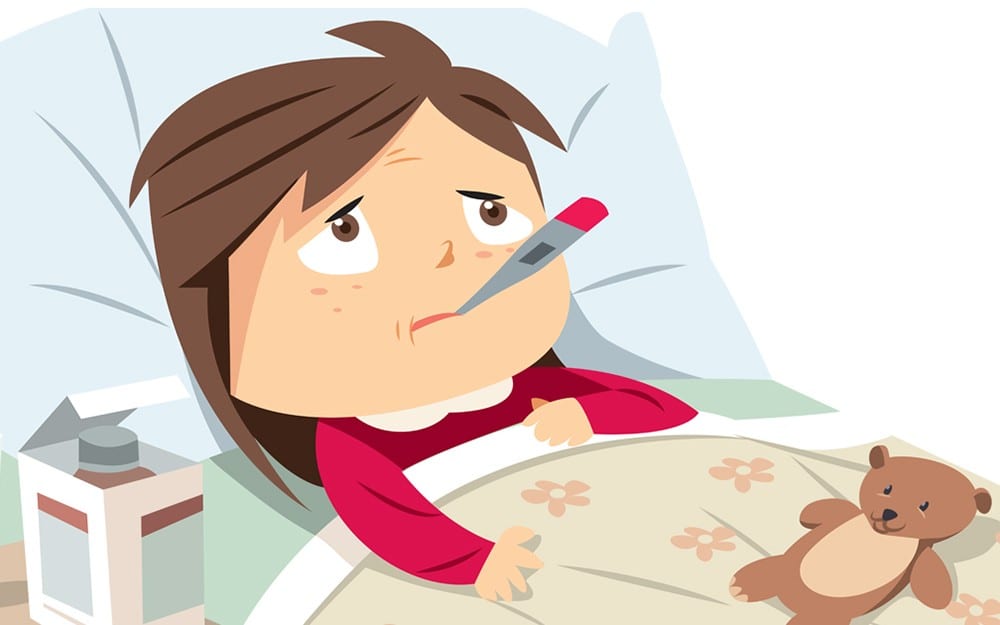
There is a certain charm to older homes. They often have features of the era they were built in, such as original crown molding or stain glass, that makes them more unique than homes that follow today’s trends. Plus, older homes tend to be made with better quality materials.
But as charming as older homes can be, they aren’t without their downsides. They frequently require more maintenance and upkeep than newer homes. And the biggest downside is there’s a higher chance of health problems when you’re living in an older home.
While any home has the potential to make you sick, older homes often have more potential health hazards lurking within their walls. Here are five common health problems that you may experience, the symptoms of each, and what you can do to resolve the problem.
Lead paint
Prior to 1978, lead was used in most paints to help accelerate drying and to increase the durability of the paint. However, when lead is absorbed into the body, it can cause health problems such as brain damage, learning disabilities, and seizures. While paints no longer contain lead, there is still a chance lead is lurking on the walls of older homes. As deteriorating lead paint circulated through your home in the form of dust, there’s a chance it could make you sick. Children are particularly vulnerable since they’re more likely to put contaminated objects in their mouths. If you suspect there is lead within your home, bring in a professional to run tests.
Outdated pipes
Depending on when the plumbing in your house was updated, your pipes may be made out of galvanized steel. Galvanized steel pipes have a zinc coating. When these pipes start corroding, lead and cadmium are released into your water. This can lead to health problems such as flu-like symptoms and bone disease. A metallic taste in your water indicates that your pipes could be corroding, so it is best to call in a professional to test your water to see if your pipes need to be replaced. If there is nothing wrong with your pipes, but overall water quality is a concern, sterilizing water with a filter is still recommended.
Asbestos
Asbestos is a naturally occurring fibrous material. Prior to 1980, it was typically used in construction materials, including insulation, fire-resistant sheeting, siding, and shingles. Breathing in these fibers has been linked to numerous health concerns, including chronic respiratory disease and lung cancer. You’re most at risk for the dangers associated with asbestos during remodels. Anytime that you are remodeling an older home, assume that asbestos is present. The best way to test for asbestos is to bring a small sample of the material to a professional to have it tested. If asbestos is found in the material, you should hire a professional to help with the remodel.
Pest infestation
Pests can be found in any home, but older homes are more prone to them because there are typically small cracks and crevices throughout the house. Cockroaches, rodents, mosquitoes, and flies all carry bacteria that can contribute to illnesses and allergies. If you find an unusual amount of pests in your home, carefully look throughout your home for any areas that need patched or caulked. Regular visits from an exterminator can also help.
Another common pest in older homes is dust mites. If the carpets in your home haven’t been replaced in years, there could be a high concentration of dust mites lurking within. This can trigger allergies and asthmas. If the carpet in your home is over 15 years old, it is time to consider replacing it. The older the carpet, the harder it is to get rid of allergens lurking within, even if you do regular deep cleanings.
Mold problems
Black mold can frequently be found in attics and basements of older homes. Usually, black mold is a result of water leaking in and poor ventilation. Prolonged moisture exposure eventually leads to mold developing. If mold is present, you’ll be able to visibly see it or you’ll be able to smell it. Exposure to black mold can lead to respiratory problems. Long-term exposure can lead to black mold poisoning, which can lead to death. Mild cases of black mold can be treated with common cleaning supplies, but you’ll need a professional for extreme cases.
Final thoughts
If you live in an older home but struggle with frequent illnesses, your home may be the cause of your problems. The good news is that most of the problems mentioned above can be resolved through remodeling your home with the help of professionals.
